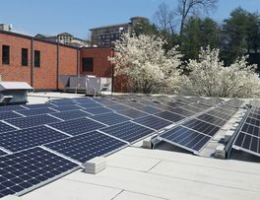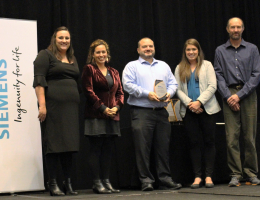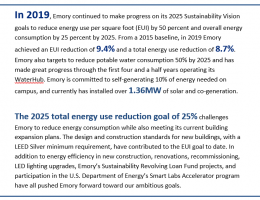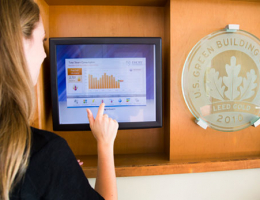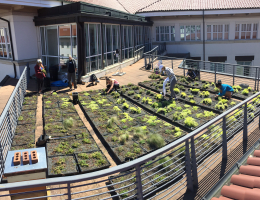Energy Efficiency Highlights
Emory’s comprehensive strategy to achieve its ambitious energy reduction goals includes continuous process improvement, innovative energy reduction strategies, and detailed monitoring of building energy performance across campus.
Emory’s 2025 Sustainability Vision calls for a 50 percent reduction in energy use per square foot and a 25 percent reduction in overall energy use from a 2015 baseline.
Energy Efficiency Benefits
- According to the Department of Energy, improving energy efficiency is one of the most cost-effective ways to reduce greenhouse gas emissions and combat climate change.
- Emory is saving money on utilities while minimizing waste. From a 2015 baseline, in 2021, Emory achieved an EUI reduction of 15.3% and a total energy use reduction of 14.1%. Read about Emory’s energy usage in the 2021 Annual Energy & Utilities Report.
- Projects such as lighting retrofits, weatherization strategies, and heating and air-conditioning ventilation upgrades make facilities more comfortable as the seasons change and are critical to meeting our energy conservation goals. These strategies are widely adopted across campus.
- Green roofs help create a cooler rooftop environment, reduce Emory’s contribution to Atlanta’s urban heat island, and absorb heavy stormwater run-off.
- Building Sustainability Representatives from each major building on campus serve as ambassadors to work with occupants around creating a culture of awareness and conservation, further multiplying the impacts of energy efficiency improvements.
How It Works
- Temperature Policy: In accordance with national and peer best practices, Emory has a standardized temperature range of 68°-76° (+/-2°) in the majority of campus buildings. This temperature policy was vetted and approved by Emory’s leadership and President as one of Emory’s earliest sustainability-related policies. This policy established Emory as a leader in developing Climate Solutions because energy and water consumption to control temperature are a part of the building sector’s responsibility for 39% of global energy-related carbon emissions.
- Recommissioning and Sustainable Performance Program: Recommissioning is an ongoing process across Emory which optimizes existing building systems by identifying controls, schedules, faulty equipment or installations and sets the building back on course for energy efficiency. It is a major driver of energy use per square foot reductions for the University. Once buildings are recommissioned, the Sustainable Performance Program (SPP) strives to keep building HVAC systems optimized and prevent performance degradation.
- LEED: All new construction must meet LEED Silver standards – which requires rigorous attention to energy efficient lighting, indoor climate, and other factors.
- Lighting: Emory has taken steps to reduce lighting’s energy use, including using more energy efficient LED bulbs and timing light use with room occupancy. All new buildings now use LED lighting from inception; the first building to do so was Eleanore Raoul Hall, which opened in 2014.
- Green Roofs: Vegetated roof coverings are installed on various Emory buildings – including residence halls, campus maintenance buildings, pedestrian plazas, and a hospital – in place of tiles or shingles. These green roofs help absorb summer heat and absorb stormwater run-off.
$853k
and 12.4 million KWh saved by converting parking deck lights to LEDs as of 2020.
$13k
saved in energy costs during the 2020 holiday building turndown.
3,136 MWh
of electricity produced from on-campus solar and steam energy in 2020.

